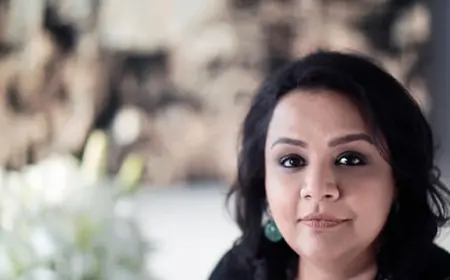Brazil Beauty and Personal Care Products Market Outlook 2025-2033: Growth, Trends, and Forecast
According to the latest report by IMARC Group, the Brazil beauty and personal care products market size was valued at USD 29.9 Billion in 2024. Looking forward, IMARC Group estimates the market to reach USD 43.0 Billion by 2033, exhibiting a CAGR of 4.11% from 2025-2033.

Introduction to the Brazil Beauty and Personal Care Products Market
Brazil is home to one of the world’s largest beauty and personal care markets, ranking at the top in Latin America and globally. With a vibrant beauty culture, diverse consumer base, and strong domestic brands, the country offers major opportunities for both local and international players.
For Brazilians, beauty and self-care are deeply ingrained in daily life, fueling demand across skincare, haircare, fragrances, and cosmetics. Rising incomes, digital influence, and shifting lifestyle trends are setting the stage for sustained market growth.
Market Size and Growth Forecast (2024-2033)
Market Valuation in 2024
According to IMARC Group, Brazil’s beauty and personal care market was valued at USD 29.9 billion in 2024.
Expected Market Size by 2033
The market is forecast to reach USD 43.0 billion by 2033, supported by growing interest in premium, natural, and personalized products.
CAGR Analysis: 2025–2033
The industry is projected to grow at a CAGR of 4.11% between 2025 and 2033.
Download sample copy of the Report: https://www.imarcgroup.com/Brazil-Beauty-Personal-Care-Products-Market/requestsample
Key Drivers of the Brazil Beauty and Personal Care Products Market
Rising Consumer Awareness and Self-Care
-
Skincare routines, wellness practices, and holistic beauty are becoming mainstream.
-
Anti-aging and preventive care products are in high demand.
Growing Middle Class and Urbanization
-
A growing middle-income population supports spending on both affordable and premium brands.
-
Urban lifestyles expand access to diverse retail formats, from shopping malls to online stores.
Digital Marketing and Social Media Influence
-
Beauty influencers, bloggers, and TikTok creators are shaping purchase decisions.
-
Augmented reality tools and virtual try-ons are transforming online shopping.
Market Challenges and Restraints
Intense Competition and Price Sensitivity
-
Heavy rivalry between local and global brands leads to aggressive pricing.
-
Many consumers remain highly price-conscious.
Regulatory and Ingredient Restrictions
-
Strict ANVISA guidelines regulate cosmetics, often requiring product reformulation.
-
Compliance challenges can delay new launches.
Counterfeit and Low-Quality Products
-
Informal markets selling counterfeit products undermine consumer trust and brand value.
Ask analyst for your customized sample: https://www.imarcgroup.com/request?type=report&id=3796&flag=C
Brazil Beauty and Personal Care Products Market Segmentation
By Product
-
Skincare: The largest and fastest-growing category. Includes anti-aging creams, sunscreens, serums, and moisturizers, with strong demand for dermatologist-recommended and clean-label options.
-
Haircare: One of the world’s biggest haircare markets. Products include shampoos, conditioners, oils, and treatments tailored for curls and straightening.
-
Oral Care: Growing category with toothpaste, whitening solutions, and mouthwash, supported by preventive care awareness.
-
Makeup and Color Cosmetics: Driven by youth culture, celebrity endorsements, and social media trends. Lipsticks, foundations, and eye makeup lead sales.
-
Deodorants and Fragrances: Brazil is a global leader in fragrance consumption. Everyday deodorant use is culturally ingrained, making this a stable, high-volume market.
-
Others: Includes men’s grooming, bath products, and niche wellness items.
By Pricing
-
Mass Market: The largest share, offering affordability for middle- and lower-income consumers.
-
Premium: Rising demand for luxury, imported, and organic products, fueled by aspirational lifestyles.
By Ingredient
-
Natural: Growing preference for sustainable, chemical-free beauty products. High demand for Amazonian botanicals and oils.
-
Organic: Still niche but expanding rapidly, especially among health-conscious consumers.
-
Others: Conventional products remain dominant but face growing competition from clean alternatives.
By Distribution Channel
-
Supermarkets and Hypermarkets: Widely used for affordable products with broad availability.
-
Specialty Stores: Offer curated selections and premium shopping experiences.
-
Pharmacies: Rising importance due to dermocosmetics and prescription skincare.
-
Online: One of the fastest-growing channels, supported by e-commerce platforms, mobile apps, and social commerce.
-
Others: Includes salons, spas, and direct selling models like Avon and Natura’s door-to-door networks.
Regional Insights
Southeast: Brazil’s Beauty Capital
-
São Paulo and Rio de Janeiro dominate with the largest consumer base and premium retail presence.
-
Strong adoption of digital shopping enhances growth.
South and Northeast: Rising Demand
-
The South’s higher income levels support premium product sales.
-
The Northeast is an emerging market with increasing middle-class purchasing power.
North and Central-West: Growth Potential
-
Consumers favor mass-market skincare and haircare.
-
Expanding distribution networks are key to capturing demand in underserved areas.
Competitive Landscape and Leading Players
Domestic Leaders
-
Natura & Co., O Boticário, and Avon hold strong positions, particularly in fragrances, skincare, and sustainable beauty.
International Players
-
L’Oréal, Unilever, Procter & Gamble, Estée Lauder, and Shiseido have expanded aggressively in Brazil.
-
They focus on premium lines and dermocosmetics aimed at urban, high-income consumers.
Future Opportunities in the Brazil Beauty and Personal Care Products Market
-
Clean Beauty and Sustainable Packaging: Cruelty-free, vegan, and eco-friendly products are gaining traction. Brands embracing sustainable packaging will stand out.
-
E-commerce and Omnichannel Growth: Direct-to-consumer platforms and hybrid retail strategies are becoming essential.
-
Innovation in Men’s Grooming and Niche Segments: Beard care, men’s skincare, and gender-neutral beauty are rising categories. Anti-pollution skincare and wellness-driven beauty also present opportunities.
FAQs on the Brazil Beauty and Personal Care Products Market
Q1. What is the size of the market in 2024?
USD 29.9 billion.
Q2. What is the projected market size by 2033?
USD 43.0 billion, at a CAGR of 4.11%.
Q3. Which product categories dominate?
Skincare and haircare, followed by fragrances and cosmetics.
Q4. Which distribution channel is growing fastest?
Online sales, supported by e-commerce and social commerce.
Q5. Which region consumes the most beauty products?
The Southeast, particularly São Paulo.
Q6. Who are the leading players?
Natura & Co., O Boticário, Avon, L’Oréal, and Unilever.
Conclusion: Outlook for 2024-2033
Brazil’s beauty and personal care industry is set to grow from USD 29.9 billion in 2024 to USD 43.0 billion by 2033, expanding at a CAGR of 4.11%.
The sector will benefit from digitalization, premiumization, sustainability trends, and rising middle-class spending. Despite hurdles like counterfeits and regulatory restrictions, the long-term outlook remains highly positive.
Brands that embrace clean beauty, invest in e-commerce, and cater to diverse consumer needs will shape the next decade of Brazil’s beauty market.
What's Your Reaction?
 Like
0
Like
0
 Dislike
0
Dislike
0
 Love
0
Love
0
 Funny
0
Funny
0
 Angry
0
Angry
0
 Sad
0
Sad
0
 Wow
0
Wow
0






























































